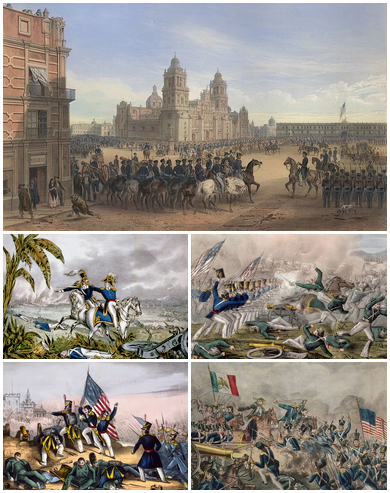|
Antoine-Fortuné Marion
Antoine-Fortuné Marion (10 October 1846 – 22 January 1900) was a French naturalist with interests in geology, zoology, and botany. He was also a competent amateur painter. A school friend of Paul Cézanne's in Aix-en-Provence, Marion went on to become professor and director of the Natural History Museum in Marseille. Cézanne painted his portrait in 1866–1867 at the Bastide du Jas de Bouffan. He received his higher education in Marseille, earning his arts and letters degree in 1866 and his degree in sciences in 1868. In 1878 he opened a marine laboratory with financial assistance provided by the city of Marseille, which led in 1882 to the building of the Marine Station of Endoume. In 1880 he became director of the Muséum d’histoire naturelle de Marseille. He was a good friend of Gaston de Saporta, with whom he collaborated on works in the field of botany. As a zoologist, his research included studies of segmented marine worms, free-living roundworms of the Mediterr ... [...More Info...] [...Related Items...] OR: [Wikipedia] [Google] [Baidu] |
Aix-en-Provence
Aix-en-Provence, or simply Aix, is a List of communes in France with over 20,000 inhabitants, city and Communes of France, commune in southern France, about north of Marseille. A former capital of Provence, it is the Subprefectures in France, subprefecture of the arrondissement of Aix-en-Provence, in the department of Bouches-du-Rhône, in the region of Provence-Alpes-Côte d'Azur. The population of Aix-en-Provence is approximately 145,000. Its inhabitants are called ''Aixois'' or, less commonly, ''Aquisextains''. History Aix (''Aquae Sextiae'') was founded in 123 BC by the Roman consul Gaius Sextius Calvinus, Sextius Calvinus, who gave his name to its springs, following the destruction of the nearby Gauls, Gallic oppidum at Entremont (oppidum), Entremont. In 102 BC its vicinity was the scene of the Battle of Aquae Sextiae, where the Romans under Gaius Marius defeated the Ambrones and Teutones, with mass suicides among the captured women, which passed into Roman legends of ... [...More Info...] [...Related Items...] OR: [Wikipedia] [Google] [Baidu] |
Rotifer
The rotifers (, from Latin 'wheel' and 'bearing'), sometimes called wheel animals or wheel animalcules, make up a phylum (Rotifera ) of microscopic and near-microscopic Coelom#Pseudocoelomates, pseudocoelomate animals. They were first described by John Harris (writer), Rev. John Harris in 1696, and other forms were described by Antonie van Leeuwenhoek in 1703. Most rotifers are around long (although their size can range from to over ), and are common in freshwater environments throughout the world with a few Seawater, saltwater species. Some rotifers are free swimming and truly planktonic, others move by inchworming along a substrate, and some are Sessility (zoology), sessile, living inside tubes or gelatinous holdfast (biology), holdfasts that are attached to a substrate. About 25 species are colonial (e.g., ''Sinantherina semibullata''), either sessile or planktonic. Rotifers are an important part of the freshwater zooplankton, being a major foodsource and with many specie ... [...More Info...] [...Related Items...] OR: [Wikipedia] [Google] [Baidu] |
19th-century French Zoologists
The 19th century began on 1 January 1801 (represented by the Roman numerals MDCCCI), and ended on 31 December 1900 (MCM). It was the 9th century of the 2nd millennium. It was characterized by vast social upheaval. Slavery was Abolitionism, abolished in much of Europe and the Americas. The First Industrial Revolution, though it began in the late 18th century, expanded beyond its British homeland for the first time during the 19th century, particularly remaking the economies and societies of the Low Countries, France, the Rhineland, Northern Italy, and the Northeastern United States. A few decades later, the Second Industrial Revolution led to ever more massive urbanization and much higher levels of productivity, profit, and prosperity, a pattern that continued into the 20th century. The Catholic Church, in response to the growing influence and power of modernism, secularism and materialism, formed the First Vatican Council in the late 19th century to deal with such problems an ... [...More Info...] [...Related Items...] OR: [Wikipedia] [Google] [Baidu] |
French Naturalists
French may refer to: * Something of, from, or related to France ** French language, which originated in France ** French people, a nation and ethnic group ** French cuisine, cooking traditions and practices Arts and media * The French (band), a British rock band * French (episode), "French" (episode), a live-action episode of ''The Super Mario Bros. Super Show!'' * Française (film), ''Française'' (film), a 2008 film * French Stewart (born 1964), American actor Other uses * French (surname), a surname (including a list of people with the name) * French (tunic), a type of military jacket or tunic * French's, an American brand of mustard condiment * French (catheter scale), a unit of measurement * French Defence, a chess opening * French kiss, a type of kiss See also * France (other) * Franch, a surname * French Revolution (other) * French River (other), several rivers and other places * Frenching (other) * Justice French (other) ... [...More Info...] [...Related Items...] OR: [Wikipedia] [Google] [Baidu] |
19th-century French Botanists
The 19th century began on 1 January 1801 (represented by the Roman numerals MDCCCI), and ended on 31 December 1900 (MCM). It was the 9th century of the 2nd millennium. It was characterized by vast social upheaval. Slavery was abolished in much of Europe and the Americas. The First Industrial Revolution, though it began in the late 18th century, expanded beyond its British homeland for the first time during the 19th century, particularly remaking the economies and societies of the Low Countries, France, the Rhineland, Northern Italy, and the Northeastern United States. A few decades later, the Second Industrial Revolution led to ever more massive urbanization and much higher levels of productivity, profit, and prosperity, a pattern that continued into the 20th century. The Catholic Church, in response to the growing influence and power of modernism, secularism and materialism, formed the First Vatican Council in the late 19th century to deal with such problems and confirm ce ... [...More Info...] [...Related Items...] OR: [Wikipedia] [Google] [Baidu] |
1900 Deaths
As of March 1 (Old Style, O.S. February 17), when the Julian calendar acknowledged a leap day and the Gregorian calendar did not, the Julian calendar fell one day further behind, bringing the difference to 13 days until February 28 (Old Style, O.S. February 15), 2100. Summary Political and military The year 1900 was the end of the 19th century and the beginning of the 20th century. Two days into the new year, the United States Secretary of State, U.S. Secretary of State John Hay announced the Open Door Policy regarding Qing dynasty, China, advocating for equal access for all nations to the Chinese market. The 1900 Galveston hurricane, Galveston hurricane would become the List of disasters in the United States by death toll, deadliest natural disaster in United States history, killing between 6,000 and 12,000 people, mostly in and near Galveston, Texas, as well as leaving 10,000 people homeless, destroying 7,000 buildings of all kinds in Galveston. As of 2025, it remains ... [...More Info...] [...Related Items...] OR: [Wikipedia] [Google] [Baidu] |
1846 Births
Events January–March * January 5 – The United States House of Representatives votes to stop sharing the Oregon Country with the United Kingdom. * January 13 – The Milan–Venice railway's bridge, over the Venetian Lagoon between Mestre and Venice in Italy, opens, the world's longest since 1151. * January 23 – Ahmad I ibn Mustafa, Bey of Tunis, declares the legal abolition of slavery in Tunisia. * February 4 – Led by Brigham Young, many Mormons in the U.S. begin their migration west from Nauvoo, Illinois, to the Great Salt Lake in what becomes Utah. * February 10 – First Anglo-Sikh war: Battle of Sobraon – British forces in India defeat the Sikhs. * February 18 – The Galician Peasant Uprising of 1846 begins in Austria. * February 19 – Texas annexation: United States president James K. Polk's annexation of the Republic of Texas is finalized by Texas president Anson Jones in a formal ceremony of transfer of sovereignty. The newly formed ... [...More Info...] [...Related Items...] OR: [Wikipedia] [Google] [Baidu] |
Fitzwilliam Museum
The Fitzwilliam Museum is the art and antiquities University museum, museum of the University of Cambridge. It is located on Trumpington Street opposite Fitzwilliam Street in central Cambridge. It was founded in 1816 under the will of Richard FitzWilliam, 7th Viscount FitzWilliam (1745–1816), and comprises one of the best collections of antiquities and modern art in western Europe. With over half a million objects and artworks in its collections, the displays in the museum explore world history and art from antiquity to the present. The treasures of the museum include artworks by Monet, Picasso, Peter Paul Rubens, Rubens, Vincent van Gogh, Pierre Auguste Renoir, Renoir, Rembrandt, Cézanne, Anthony van Dyck, Van Dyck, and Canaletto, as well as a winged bas-relief from Nimrud. Admission to the public is always free. The museum is a partner in the University of Cambridge Museums consortium, one of 16 Major Partner Museum services funded by Arts Council England to lead the d ... [...More Info...] [...Related Items...] OR: [Wikipedia] [Google] [Baidu] |
Aphid
Aphids are small sap-sucking insects in the Taxonomic rank, family Aphididae. Common names include greenfly and blackfly, although individuals within a species can vary widely in color. The group includes the fluffy white Eriosomatinae, woolly aphids. A typical life cycle involves flightless females giving Viviparity, live birth to female Nymph (biology), nymphs—who may also be already Pregnancy, pregnant, an adaptation scientists call telescoping generations—without the involvement of males. Developmental biology, Maturing rapidly, females breed profusely so that the number of these insects multiplies quickly. Alate, Winged females may develop later in the season, allowing the insects to colonize new plants. In Temperate climate, temperate regions, a phase of sexual reproduction occurs in the autumn, with the insects often overwintering as eggs. The life cycle of some species involves an alternation between two species of host plants, for example between an annual crop and ... [...More Info...] [...Related Items...] OR: [Wikipedia] [Google] [Baidu] |
Phylloxera
Grape phylloxera is an insect pest of grapevines worldwide, originally native to eastern North America. Grape phylloxera (''Daktulosphaira vitifoliae'' (Fitch 1855) belongs to the family Phylloxeridae, within the order Hemiptera, bugs); originally described in France as ''Phylloxera vastatrix''; equated to the previously described ''Daktulosphaera vitifoliae'', ''Phylloxera vitifoliae''. The insect is commonly just called phylloxera (; from , leaf, and , dry). These almost microscopic, pale yellow sap-sucking insects, related to aphids, feed on the roots and leaves of grapevines (depending on the phylloxera genetic strain). On ''Vitis vinifera'', the resulting deformations on roots ("nodosities" and "tuberosities") and secondary fungal infections can girdle roots, gradually cutting off the flow of nutrients and water to the vine.Wine & Spirits Education Trust ''"Wine and Spirits: Understanding Wine Quality"'' pgs 2–5, Second Revised Edition (2012), London, Nymphs also for ... [...More Info...] [...Related Items...] OR: [Wikipedia] [Google] [Baidu] |
Crustacean
Crustaceans (from Latin meaning: "those with shells" or "crusted ones") are invertebrate animals that constitute one group of arthropods that are traditionally a part of the subphylum Crustacea (), a large, diverse group of mainly aquatic arthropods including decapods (shrimps, prawns, crabs, lobsters and crayfish), seed shrimp, branchiopods, fish lice, krill, remipedes, isopods, barnacles, copepods, opossum shrimps, amphipods and mantis shrimp. The crustacean group can be treated as a subphylum under the clade Mandibulata. It is now well accepted that the hexapods (insects and entognathans) emerged deep in the Crustacean group, with the completed pan-group referred to as Pancrustacea. The three classes Cephalocarida, Branchiopoda and Remipedia are more closely related to the hexapods than they are to any of the other crustaceans ( oligostracans and multicrustaceans). The 67,000 described species range in size from '' Stygotantulus stocki'' at , to the Japanese ... [...More Info...] [...Related Items...] OR: [Wikipedia] [Google] [Baidu] |








